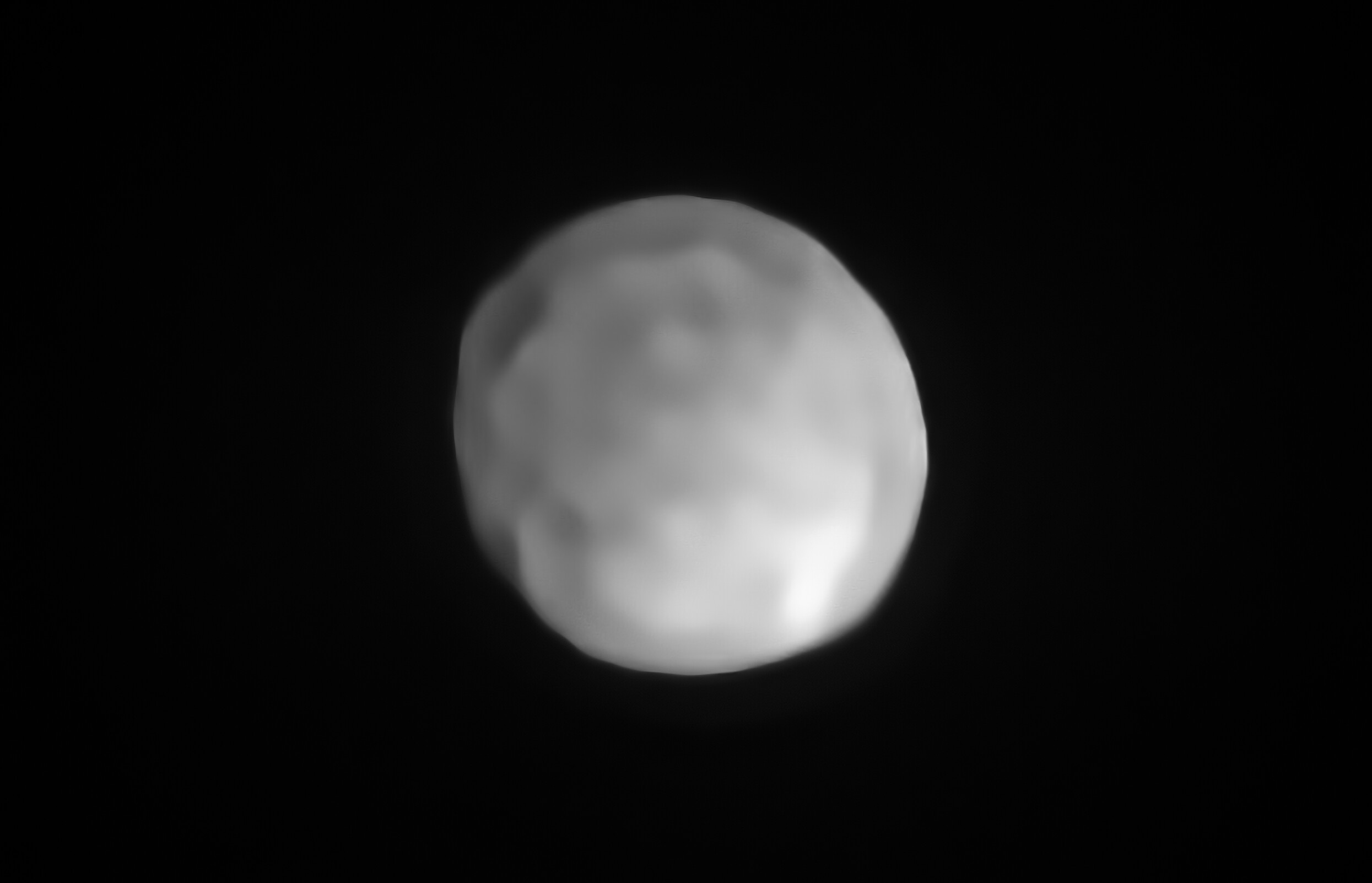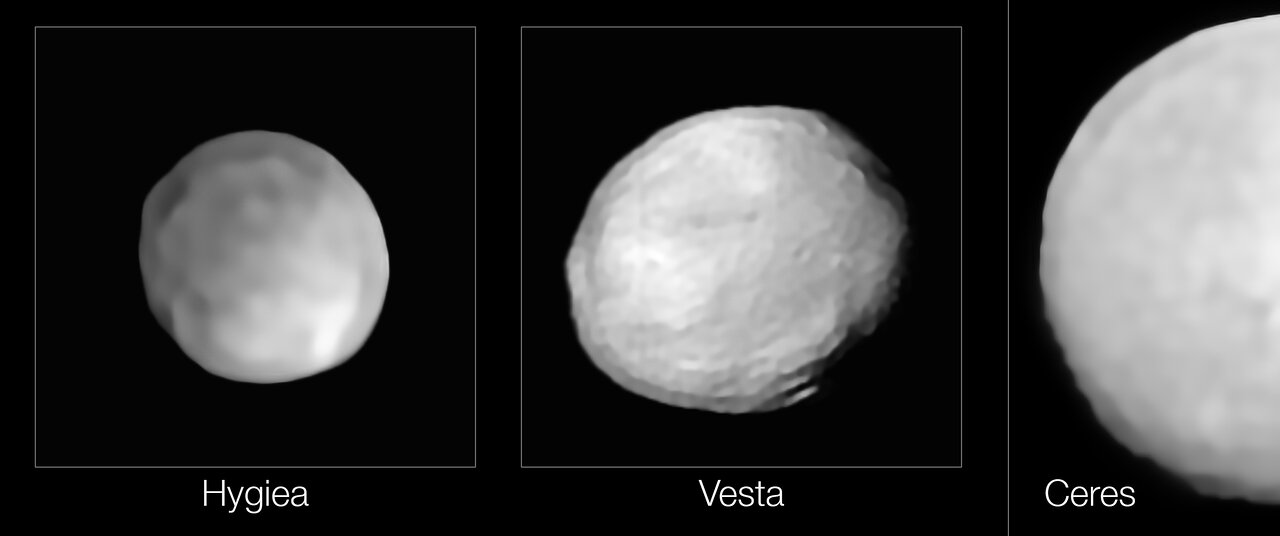Asteroid Hygiea May Be the Smallest Dwarf Planet in the Solar System
Step aside, Ceres. There's a new smallest dwarf planet in town.
The asteroid Hygiea may qualify as a dwarf planet — and it could steal the title of the smallest dwarf planet in the solar system!
Astronomers have captured high-resolution imagery of Hygiea, the fourth largest rock in the Asteroid Belt. And low and behold, Hygiea is spherical in shape. That's a pretty important dwarf-planet marker, and the only one Hygiea was missing until now.
Asteroids boast a variety of shapes, but the rounded shape of dwarf planets shows that they had enough mass for its own gravity to pull it into this round shape. Hygiea already met the other requirements for dwarf-planet classification since it orbits the sun, is not a moon orbiting another planet and has not cleared other objects out of its own orbit.
Video: Asteroid Hygiea May Be Smallest Dwarf Planet in Our Solar System
Related: Meet the Solar System's Dwarf Planets

So, how big is this potential new member of the dwarf planet family? The team of astronomers, led by researcher Pierre Vernazza of the Laboratoire d'Astrophysique de Marseille in France constrained Hygiea's size, and estimated its diameter is just over 267 miles (430 kilometers). For comparison, Hygiea is less than one-fifth the width of its most famous cousin, Pluto, which has a diameter of about 1,491 miles (2,400 km).
Ceres held the title of smallest dwarf planet until now, with a diameter of almost 590 miles (950 km).
Before Hygiea can be officially upgraded to dwarf planet status, the International Astronomical Union — the same group of astronomers who were responsible making Pluto a dwarf planet — must review all the evidence and take a vote.
Get the Space.com Newsletter
Breaking space news, the latest updates on rocket launches, skywatching events and more!
Video: Where is Hygiea in Our Solar System?
"Thanks to these images, Hygiea may be reclassified as a dwarf planet, so far the smallest in the solar system," Vernazza said in a statement from the European Southern Observatory (ESO), which manages the SPHERE instrument that produced the high-resolution imagery in the study. SPHERE (which stands for Spectro-Polarimetric High-contrast Exoplanet Research) sits atop the Very Large Telescope at ESO's Paranal Observatory in Chile.
"Thanks to the VLT and the new generation adaptive-optics instrument SPHERE, we are now imaging main belt asteroids with unprecedented resolution, closing the gap between Earth-based and interplanetary mission observations," Vernazza added.

A study detailing the new findings was published today (Oct. 28) in Nature Astronomy.
- Dwarf Planets of Our Solar System (Infographic)
- The Asteroid Belt May Be a 'Treasure Trove' of Planetary Building Blocks
- Why Isn't Pluto a Planet Anymore?
Follow Doris Elin Urrutia on Twitter @salazar_elin. Follow us on Twitter @Spacedotcom and on Facebook.
Join our Space Forums to keep talking space on the latest missions, night sky and more! And if you have a news tip, correction or comment, let us know at: community@space.com.

Doris is a science journalist and Space.com contributor. She received a B.A. in Sociology and Communications at Fordham University in New York City. Her first work was published in collaboration with London Mining Network, where her love of science writing was born. Her passion for astronomy started as a kid when she helped her sister build a model solar system in the Bronx. She got her first shot at astronomy writing as a Space.com editorial intern and continues to write about all things cosmic for the website. Doris has also written about microscopic plant life for Scientific American’s website and about whale calls for their print magazine. She has also written about ancient humans for Inverse, with stories ranging from how to recreate Pompeii’s cuisine to how to map the Polynesian expansion through genomics. She currently shares her home with two rabbits. Follow her on twitter at @salazar_elin.









